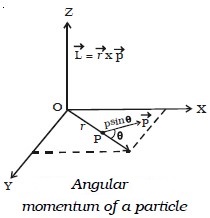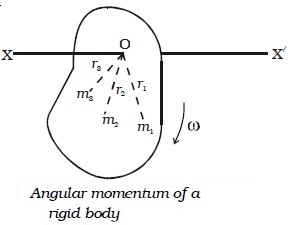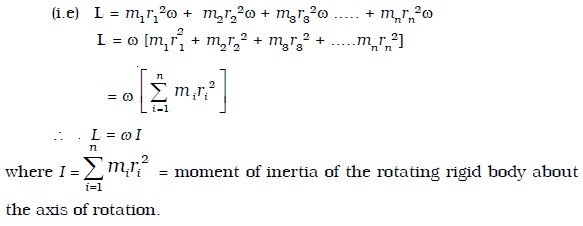Angular momentum of a particle
The angular momentum in a rotational motion is similar to the linear momentum in translatory motion. The linear momentum of a particle moving along a straight line is the product of its mass and linear velocity (i.e) p = mv. The angular momentum of a particle is defined as the moment of linear momentum of the particle. Let us consider a particle of mass m moving in the XY plane with a velocity v and linear momentum p =m v at a distance r from the origin (Fig. below).

The angular momentum L of the particle about an axis passing through O perpendicular to XY plane is defined as the cross product of r and p (i.e) L =r ×p. Its magnitude is given by L = r p sin θ where θ is the angle between r and p and L is along a direction perpendicular to the plane containing r and p. The unit of angular momentum is kg m2 s–1 and its dimensional formula is, M L2 T–1.
Angular momentum of a rigid body
Let us consider a system of n particles of masses m1, m2 ….. mn situated at distances r1, r2, …..rn respectively from the axis of rotation
(Fig. below). Let v1,v2, v3 ….. be the linear velocities of the particles respectively, then linear momentum of first particle = m1v1.
Since v1= r1ω the linear momentum. The moment of linear momentum of first particleof first particle = m1(r1 ω)

The moment of linear momentum of first particle = linear momentum × perpendicular distance
= (m1r1ω) × r1
angular momentum of first particle = m1r12ω
Similarly,
angular momentum of second particle = m2r22ω
angular momentum of third particle = m3r32ω and so on.
The sum of the moment of the linear momenta of all the particles of a rotating rigid body taken together about the axis of rotation is known as angular momentum of the rigid body.
∴ Angular momentum of the rotating rigid body = sum of the angular momenta of all the particles


